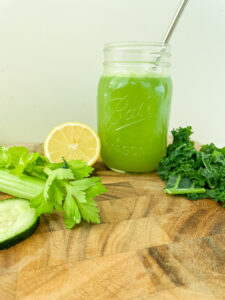Types of Juicers Explained | Best Centrifugal Juicer
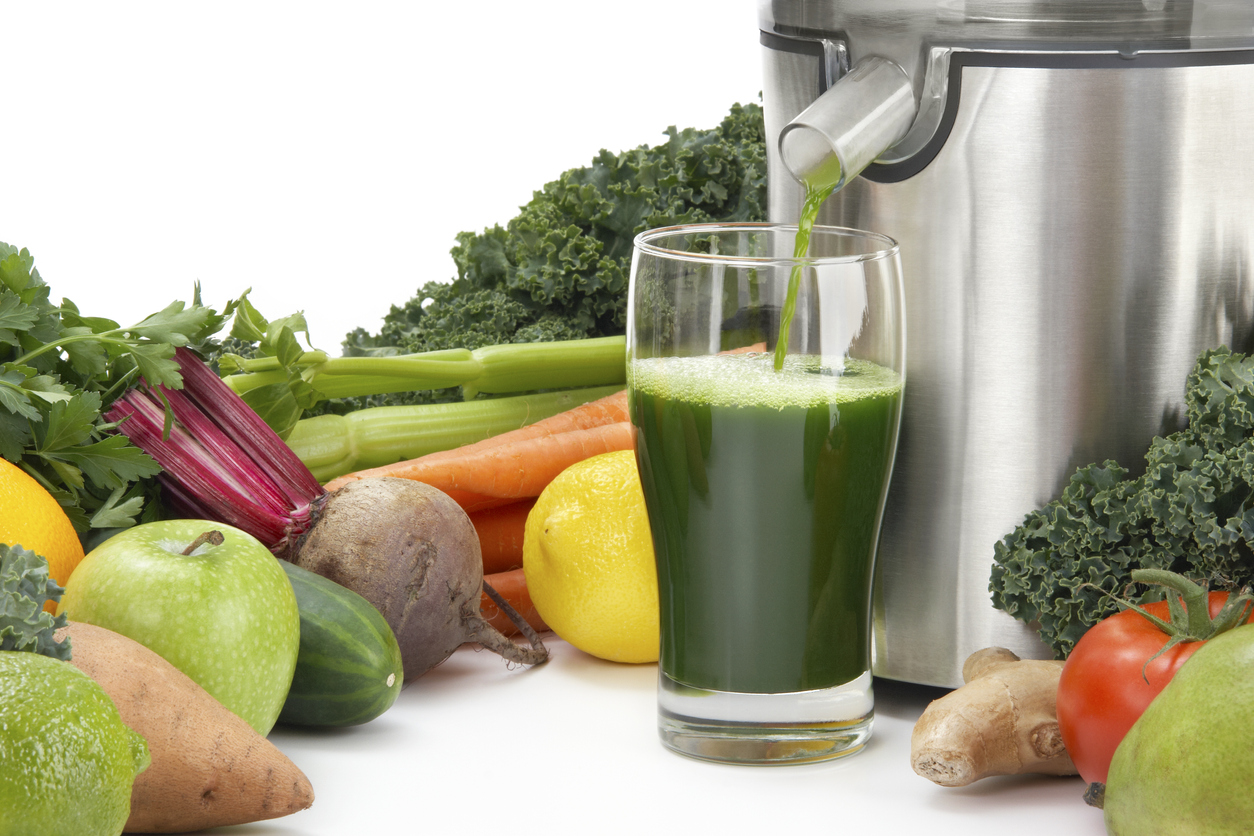
I absolutely love juicing and trying new fresh juice recipes, but understanding the juicers available and the best centrifugal juicer to buy can be overwhelming.
Juicing is so popular since it is a convenient way to consume a concentrated dose of vitamins, minerals, and antioxidants from fruits and vegetables. Skipping the juice bar or store-bought juice and finding a good juicer is a wise investment and a great way to add an easy and healthy routine into your day.
A great juicer does not have to be expensive, hard to clean, or take up a massive amount of counter space. Read on to find answers to all of your juicing questions and my recommendation for the best juicer available.
- What are the different types of juicers available?
- Why I Use a Centrifugal Juicer
- Do centrifugal juicers destroy nutrients?
- Why I believe Breville Juicers are the Best Centrifugal Juicers for Home Cooks
- What are the main differences between blending and juicing? Should I do both?
- What are the best vegetables to juice in a centrifugal juicer?
- Green Juice Recipe Ideas from Each Healthy Bite:
What are the different types of juicers available?
There are several types of juicers available on the market, each designed for specific purposes and preferences. The main types of juicers are:
- Centrifugal Juicers:
- These are the most common and affordable type of juicers. They use a high speed, rapidly spinning mesh basket to extract juice by centrifugal force. A centrifugal juicer is a fast juicer but may not produce as much juice when compared to other types.
- Masticating Juicers (Cold-Press Juicers or Slow Juicers):
- These juicers operate at lower speeds, crushing and squeezing fruits and vegetables to extract juice. They are known for producing higher-quality juice with more nutrients and enzymes. They are quieter but often come with a higher price tag.
- Twin Gear (Triturating) Juicers:
- These juicers use two interlocking gears to crush and press produce, resulting in very high juice yield and nutrient retention. They are often used for juicing a variety of fruits, vegetables, and greens.
- Citrus Juicers:
- Specifically designed for citrus fruits like oranges, lemons, and grapefruits. They typically have a cone-shaped reamer or auger to extract juice from citrus fruits. If you are looking to make fresh orange juice for breakfast, a citrus juicer is a great juice.
- Blender or Nutrient Extractor:
- While not a traditional juicer, blenders and nutrient extractors blend fresh produce into a smoothie, retaining the fiber content. Nutrient extractors like the NutriBullet are popular for creating nutrient-rich drinks.
- Manual Juicers:
- These juicers operate without electricity and are manually powered. They are often used for citrus fruits or wheatgrass and can be suitable for those who prefer a hands-on approach.
When choosing a juicer, consider factors such as the types of fruits and vegetables you'll be juicing, ease of cleaning, juice yield, noise level, and your budget. Each type of juicer has its advantages and disadvantages, so the best choice depends on your specific needs and preferences.
Why I Use a Centrifugal Juicer
I find that a centrifugal juice is perfect for my needs. Using a centrifugal models of juicers can offer several advantages, and whether it's the right choice for you depends on your specific preferences and needs. For me it is the perfect juicer. Here are some reasons why I use a centrifugal juicer:
- Speed:
- Centrifugal juicers are known for their speed. They can quickly extract juice from fruits and vegetables, making them an excellent option for those who want a fast and convenient juicing process, especially during busy mornings.
- Convenience:
- The wide feeding chutes in centrifugal juicers allow you to feed whole or large pieces of fruits and vegetables without extensive pre-cutting. This feature adds to the overall convenience and time-saving aspect of using these juicers.
- Affordability:
- Centrifugal juicers are often more budget-friendly compared to other types of juicers, such as masticating or twin gear juicers. If cost is a significant factor for you, a centrifugal juicer might be a more accessible option due to the lower price point.
- Easy Cleaning:
- Many centrifugal juicers have dishwasher-safe components, and their simple design makes them relatively easy to clean. This is beneficial for those who want a juicer that doesn't require a lot of maintenance. The easy cleanup allows me to keep juicing as a manageable part of my routine.
- Suitable for Beginners:
- If you're new to juicing, a centrifugal juicer can be a great starting point. Their straightforward operation and faster juice extraction make them user-friendly for beginners who may not want to invest in more complex juicing equipment initially.
- Great for Juicing Hard Produce:
- Centrifugal juicers excel at extracting juice from hard and dense fruits and vegetables. These are staple ingredients in most of my juice recipes, and if they are for you too, a centrifugal juicer may be a suitable choice. They can get a lot of juice from things like beets, whole apples, carrots, celery, and whole fruits. With the popularity of carrot juice and celery juice, these types of juicers are popular and can do the job.
While centrifugal juicers offer speed and convenience, it's essential to note that they may produce slightly less juice yield and may introduce more oxidation due to the high-speed spinning process. Additionally, they may not be as effective for juicing leafy greens or wheatgrass.
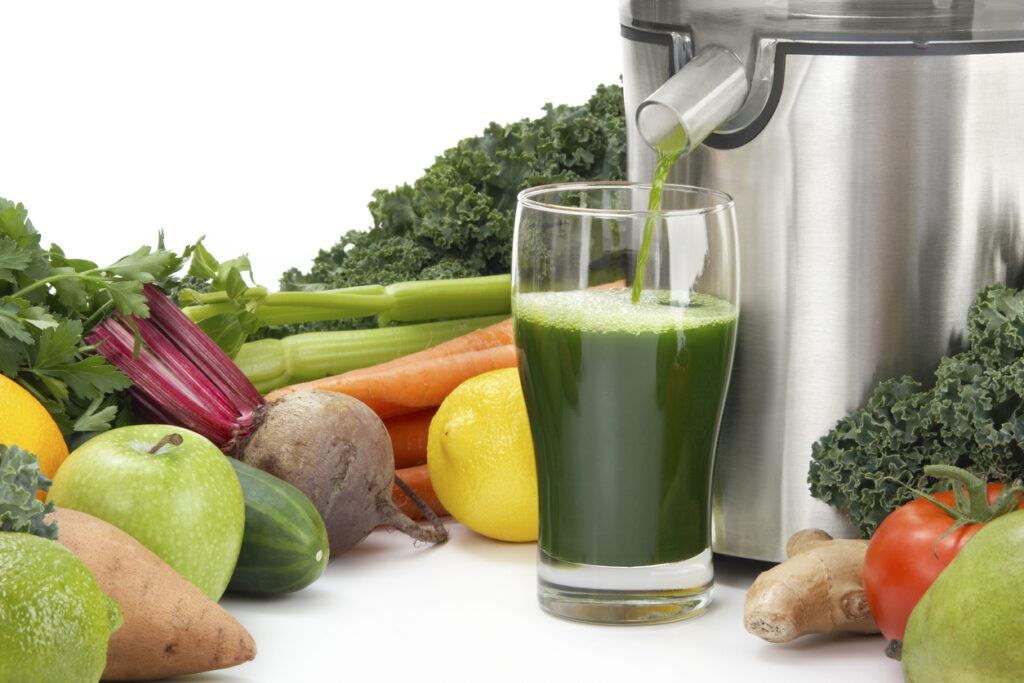
Do centrifugal juicers destroy nutrients?
Centrifugal juicers operate at high speeds, using a spinning blade to cut and separate juice from the pulp. While they are efficient in terms of speed and convenience and definitely produce healthy juice, there are concerns about the potential impact on nutrient preservation. Here's how the process may affect nutrient content:
- Oxidation:
- The high-speed spinning motion in centrifugal juicers can introduce more air into the juice, leading to oxidation. Oxidation can degrade certain sensitive nutrients, such as vitamin C and some antioxidants. The longer the juice sits after extraction, the greater the potential for nutrient loss.
- Heat Generation:
- The fast-spinning blades generate heat, and excessive heat can also contribute to nutrient degradation. While centrifugal juicers are not as heat-producing as some other methods, there is still a minimal increase in temperature during the juicing process.
- Juice Separation:
- The separation of juice and pulp in centrifugal juicers occurs quickly. Some argue that this rapid separation may not fully extract all the nutrients from the produce, potentially leaving some behind in the pulp.
Despite these concerns, it's important to note that the impact on nutrient loss in centrifugal juicers may not be significant for many individuals, especially if the juice is consumed shortly after extraction. Additionally, the convenience and speed of these juicers often outweigh the potential nutrient loss for those who prioritize efficiency in their juicing routine.
If maximum nutrient retention is a top priority for you, and you are willing to sacrifice some speed and convenience, you might consider other juicer types like masticating or twin gear juicers, which are known for their slower, gentler juicing process that minimizes oxidation and heat generation.
Why I believe Breville Juicers are the Best Centrifugal Juicers for Home Cooks
Breville juicers are some of the most popular juicers for good reason. Here are some key factors that contribute to the appeal of Breville centrifugal juicers and why I think they are the best juicers:
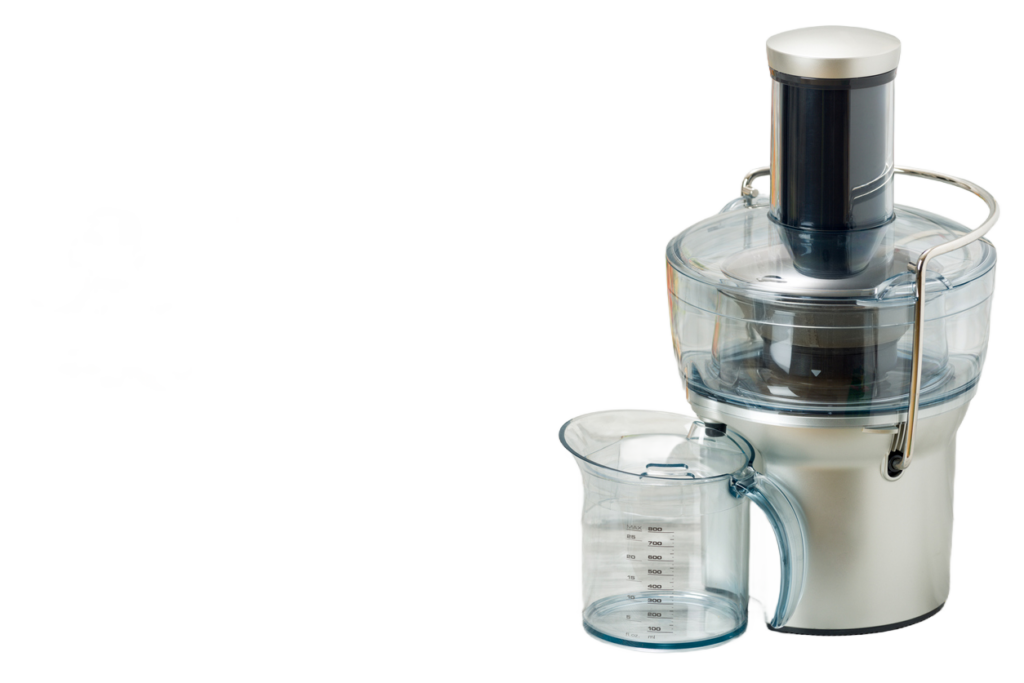
- High Speed and Efficiency:
- Breville centrifugal juicers, such as the Breville Juice Fountain series, are known for their high-speed operation. This allows for quick and efficient juicing, making them ideal for busy individuals who want a fast and convenient juicing experience.
- Wide Feeding Chute for less prep work:
- Breville centrifugal juicers typically feature wide feeding chutes, allowing users to feed whole or large pieces of fruits and vegetables without needing to cut the produce into small pieces. This feature adds to the overall convenience, ease of use, and time-saving aspect of using these juicers.
- Powerful Motor:
- Breville juicers are equipped with powerful motors, enabling them to handle a variety of fruits and vegetables, including hard and dense produce like apples and carrots. The robust motor contributes to the efficiency of the juicing process.
- User-Friendly Design:
- Breville is known for designing user-friendly appliances, and their centrifugal juicers are no exception. Intuitive controls, easy assembly, and straightforward cleaning procedures make these juicers accessible for beginners and experienced users alike.
- Durable Build Quality:
- Breville appliances are often praised for their durable build quality and materials. The sturdy construction of their centrifugal juicers contributes to their longevity and reliability. I have used my Breville juicer almost daily for years with no problems whatsoever.
- Variety of Models:
- Breville offers a range of centrifugal juicer models, providing users with options based on their specific preferences and needs. Different models may offer additional features or variations in design.
- Easy to Clean:
- Many Breville centrifugal juicers come with dishwasher-safe components, and their design makes them relatively easy to clean. This feature is a very good thing for users who want a hassle-free cleaning process.
- Appealing Aesthetics:
- Breville appliances are often praised for their modern and sleek designs. The aesthetic appeal of Breville centrifugal juicers can be a deciding factor for those who value the look of their kitchen appliances. My stainless steel Breville juicer is alway on my counter and looks great.
Ultimately, I choose Breville centrifugal juicers for their combination of speed, efficiency, user-friendly design, and overall reliability.
What are the main differences between blending and juicing? Should I do both?
Blending and juicing are both popular methods of preparing beverages with fruits and vegetables, but they differ in terms of the final product and the process. Here are the main differences between blending and juicing:
- Final Product:
- Blending: In blending, the whole fruits and vegetables are used, including the pulp and fiber. The result is a thick and smooth beverage known as a smoothie, which retains all the natural fibers of the ingredients.
- Juicing: Juicing extracts the liquid from fruits and vegetables, leaving behind the pulp and fiber. The resulting drink is a clear liquid, often referred to as juice, which contains the concentrated vitamins, minerals, and phytonutrients from the produce.
- Fiber Content:
- Blending: Retains the fiber content since the entire fruit or vegetable is used. Fiber contributes to better digestion, helps regulate blood sugar levels, and provides a feeling of fullness.
- Juicing: Removes most of the fiber, resulting in a liquid that is easier to digest and quicker to absorb into the bloodstream. Some fiber may remain in the form of insoluble fiber, but the majority is extracted.
- Nutrient Concentration:
- Blending: Because the entire produce is used, the nutrients are present in their natural concentrations. However, the blending process may introduce some oxidation, which can affect nutrient levels over time.
- Juicing: The juice is a concentrated source of vitamins, minerals, and antioxidants, as the process extracts the liquid portion of the produce. This can lead to a higher intake of nutrients per volume consumed.
- Satiety and Caloric Density:
- Blending: Smoothies tend to be more filling due to the retained fiber content. The presence of fiber can help with satiety, making it a good option for those looking to manage weight.
- Juicing: As the fiber is removed, juices may be less filling, and the caloric density is higher. Individuals might consume more calories in liquid form without the feeling of fullness compared to a fiber-rich smoothie.
- Processing Time:
- Blending: Typically takes longer, especially if ingredients need to be chopped or sliced before blending.
- Juicing: The process is generally quicker, as it involves extracting liquid from the produce.
- Equipment:
- Blending: Requires a blender, which can handle whole fruits and vegetables.
- Juicing: Requires a juicer, specifically designed to separate the liquid from the pulp.
The choice between blending and juicing depends on personal preferences, dietary goals, and the desired texture of the beverage. Both methods offer unique advantages, it is a good idea to incorporate both into your diet.
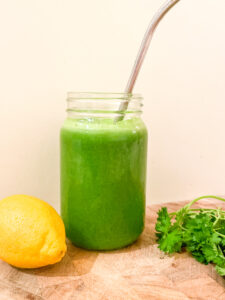
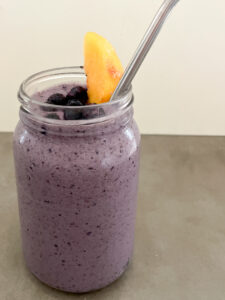
What are the best vegetables to juice in a centrifugal juicer?
Centrifugal juicers are excellent for making a variety of vegetable juice. Here are some of the best vegetables to juice using a centrifugal juicer:
- Carrots:
- Carrots are rich in beta-carotene, which is beneficial for eye health. They also add a sweet and vibrant flavor to your juice.
- Celery:
- Celery is hydrating and low in calories. It provides a refreshing taste to your juice and is often used as a base in many recipes.
- Cucumbers:
- Cucumbers are hydrating and have a mild, refreshing flavor. They add a nice liquid base to your juice.
- Beets:
- Beets are rich in antioxidants and add a sweet and earthy flavor to your juice. Just be mindful of their strong pigmentation, as it can stain.
- Bell Peppers:
- Bell peppers are rich in vitamin C and add a sweet and colorful element to your juice.
- Ginger:
- While not a vegetable, ginger is a popular addition to vegetable juices for its spicy and invigorating flavor. It also has potential anti-inflammatory properties.
- Learn more about juicing ginger.
- Bok Choy:
Remember to experiment with different combinations to find the flavor profile you enjoy the most. Additionally, washing and preparing your vegetables properly before juicing can help ensure a clean and delicious juice. When juicing, I try to buy organic produce.
Green Juice Recipe Ideas from Each Healthy Bite:

